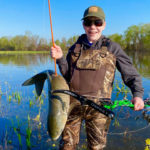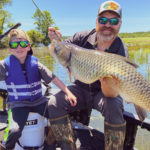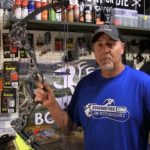Many years ago, I stood upon a bluff looking down on the North Fork River as it enters Lake Vermilion and just knew the Goddess of Bowfishing was smiling down on me that day.
There below was an area of flooded timber and grass and it was filled with carp by the hundreds or even thousands and they were stranded in just 2 feet of water.
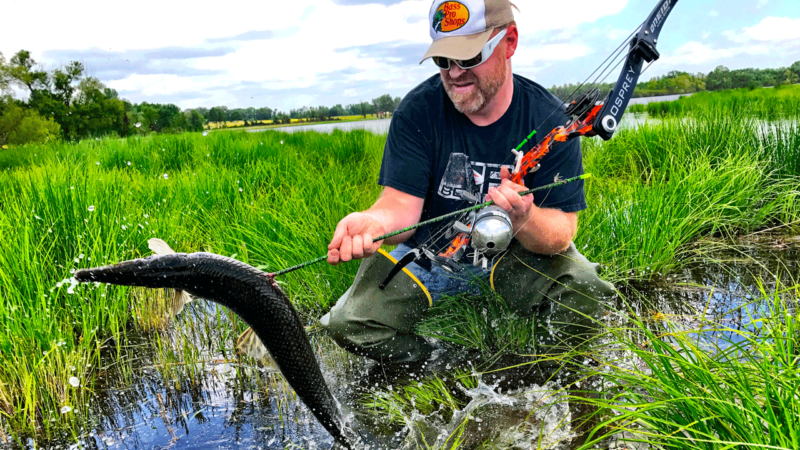
We had just received torrential rains which caused significant flooding and allowed the carp to head upstream to feed and then by my good fortune, those individuals that controlled the dam decided to lower the level of the lake very quickly, in fact too quickly for those carp to make it back to the river.
It was going to be a huge numbers day and as easy as shooting fish in a barrel, or so I thought. I had just purchased this new compound bow which I was going to be using that fall for bowhunting deer and so I wanted to break it in on a few fish.
As I drew down on the fish, I remember thinking how easy this was going to be.
This new PSE bow had very efficient hot cams and I had the draw weight cranked way up. I began slowly wading into the backwater and immediately had a decent carp only a few feet away.
I released the arrow with my fingers and then…..splash, the fish swam off and I realized immediately that my arrow had hit the water at a terrible angle.
Figuring my line had just gotten caught up in my reel, I pulled off some line making sure it was wet and limp and then proceeded to wind up the line so as the next shot would pay out more smoothly.
Moments later another shot presented itself, I released and again the arrow slapped the water at such an angle that I merely spanked the fish and off he went. I then proceeded to shoot several more times and each time the same scenario played out.
Finally it dawned on me that my standard fiberglass arrow was not even close to being tuned to my new bow and was probably well under-spined causing the poor arrow flight.
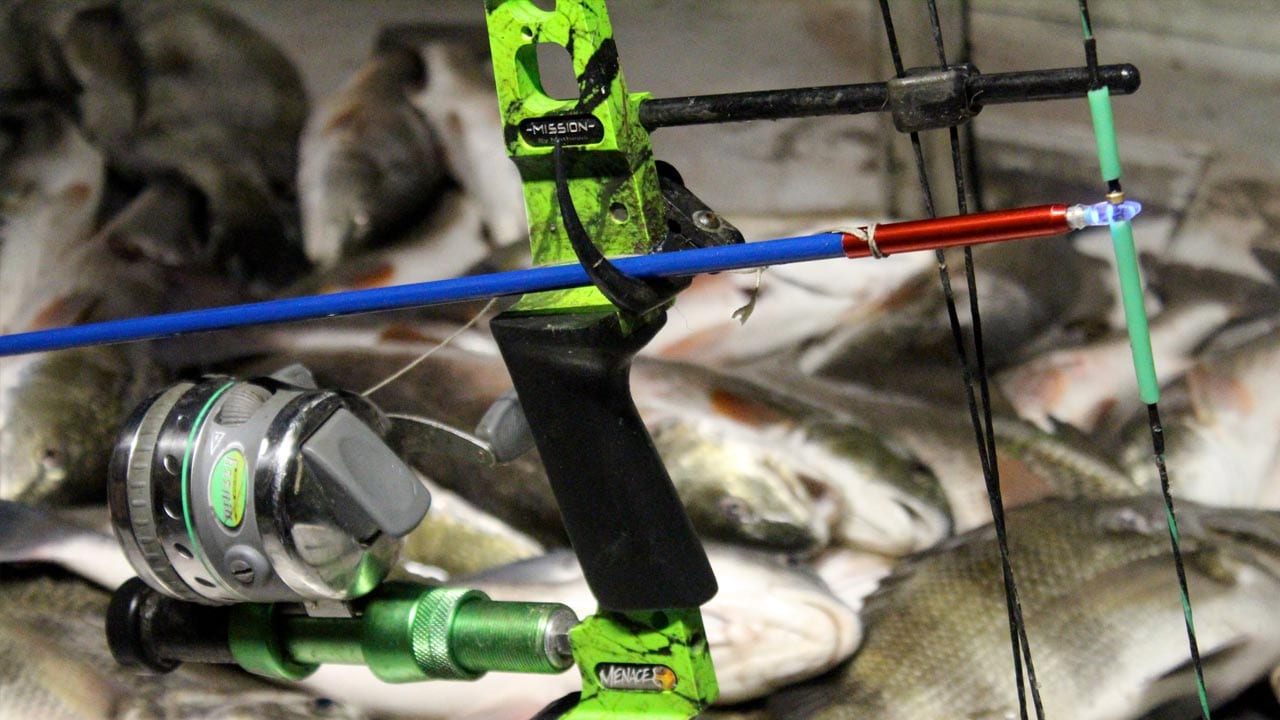
In order to tune your fishing bow and fish arrow, start by shooting your bowfishing set up into a bank of sand, dirt, or any non-directional material such as 3-D foam.
Use the bare shaft test in order to get an idea just how your arrow is leaving the bow and how it will enter the water. If you’re unsure how the bare shaft test is conducted, you should be able to find out more by researching any number of sites and articles dedicated to this technique.
If your arrow is under-spined, which occurs more often than over-spined, consider the following:
1. Move your arrow rest if possible either closer or farther out from the riser of the bow to decrease fishtailing. If you can’t get where you want to go by adjusting the rest, don’t hesitate to try a different style rest. Over the years, I’ve found that some bow and arrow rest combinations were much more compatible then others.
2. Decrease the weight of the bow if you’re shooting a compound. One of the finest bowfishermen in Illinois who recently won the Illinois State Championship only shoots his Oneida at about 30 lbs. Unless he’s after larger fish, that’s all he feels is needed to penetrate most soft fleshed fish like carp and buffalo and it’s even adequate for most modest size gar.
3. Cut your arrow shaft down by an inch or two. The shorter the arrow, the stiffer the spine. Now most people don’t have a 31” or 32” draw length so there’s no problem in cutting off some of the arrow and still having enough that you don’t risk over drawing your bow and having the arrow come off the shelf.
4. Select a bowfishing head that is lighter in weight. The lighter the point, the stiffer the spine of the arrow. The one I was using in the above story was the old sting-ray head which is a fine head but it is also one of the heaviest out there.
5. Consider going to one of the newer arrows out there as many of them are much stiffer due to the incorporation of graphite fibers within the fiberglass material such as the Yellow Jacket or the new all graphite arrows like the Muzzy Carbon Mag. A bowfishing friend of mine just related to me that he had switched to the Yellow Jacket shafts and really enjoyed the improved flight but he found that he had to make sighting adjustments as these new arrows were hitting much lower than what he was accustomed to.
6. And finally, don’t forget about porposing of the shaft which is indicated if the nock end of the arrow is entering the water too high or too low. This can generally be solved by raising or lowering the nocking point or in some cases the raising or lowering of the rest. At this point I should mention that several very fine shooting friends of mine actually set their bow up such that the arrow will enter the water just a touch nock or tail end high, as they feel this improves the penetration into the water with less planning upward
As I write this, I can’t help but remember the time that the late Billy Davis and I were sitting there chatting before a tourney and he was remarking how much he liked his new Oneida bow and how he felt it had really improved his accuracy.
I looked over at the bow and I remarked that his nocking point must have slipped up a good inch or more on the string since the arrow seemed to be at such an awkward angle relative to his rest.
He just smiled at me with that wonderful grin and stated that he had spent at least a couple of nights shooting off his front porch down into the yard and this unusually high nocking point lead to his best arrow flight.
He then proceeded to shoot a couple of arrows in laser-like fashion into the water and then he just winked at me to say, “Don’t worry about my arrow flight, you should be worrying how you’re going to feel when I’ve out fished you again”
And of course, at the end of the day, he had done just that.

